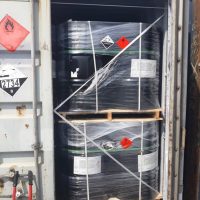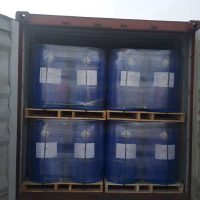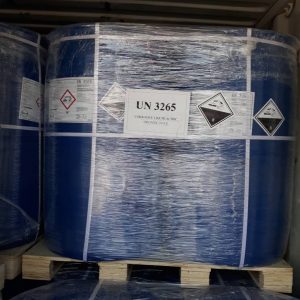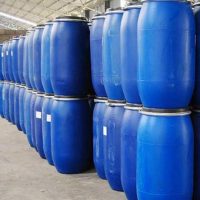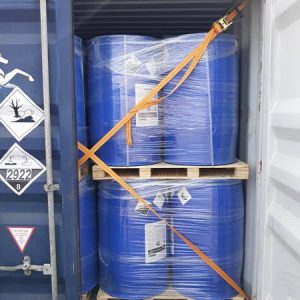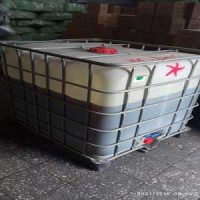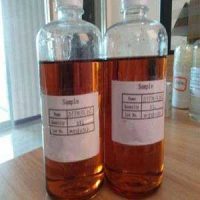Poly Aluminum Chloride (PAC)
- CAS Number: 1327-41
- Appearance: Solid
- Purity:%
- Made in: China
- Phone Num : +86-2150591759
- E-mail: info@shanghaimetex.com
- Description
- analysis
- shipping & delivery
Description
The third most abundant element in the earth’s crust, after oxygen and silicon, is aluminum. Poly aluminum chloride (PAC) is a subset of aluminum salts and is a coagulant, flocculant, or coagulant that has a polymeric structure. Also known as hydrated aluminum chloride (ACH).

PAC is one of the common coagulants in water treatment and wastewater industries and is generally offered in two types of food and industrial poly aluminum chloride.
Physical and chemical properties:
This compound has the chemical formula Al2Cl (OH)5 and is produced in the appearance of poly aluminum chloride in both solid and liquid forms. One of the most important coagulants of PAC is abbreviated as PAK, which is known as powder pack. The powder pack is in the form of a water solution or powder. This powder absorbs moisture when exposed to air. Soluble poly aluminum chloride has acidic properties and is classified as corrosive in higher concentrations.
| Chemical formula | Al2Cl (OH)5 |
| Molar mass | 174.45 g/mol |
| Appearance | Clear or slightly opalescent, amber to light pale-yellow colored, solid |
| odor | odorless |
| Density | 1.2 (±0.05) g/cm3 |
| PH | 3.0-4.0 |
| Melting Point | -10°c |
| Solubility in water | 100 % soluble |
| Solubility | soluble in alcohol |
| Other names | Aluminum Chloro hydrate; Poly aluminium Hydroxychloride, Aluminium Chloride Hydroxide |
Types of poly aluminum chloride:
- Drink or food pack:
- Used in the process of purifying drinking water.
- Industrial pack or sewage:
- For use in the water treatment process in agriculture and wastewater.
Production process:
There are different methods for the synthesis of poly aluminum chloride, which include the metal-aluminum method, the aluminum hydroxide method, the titanium-aluminum method, the aluminum chloride method, the alkali solution, and …
The production process of PAC by the aluminum metal method:
This compound is produced by the chemical reaction between alumina hydrate powder and hydrochloric acid at a high temperature and pressure.
In this method, during the process of polymerization, sedimentation, and filtration and finally drying, poly aluminum chloride is produced.
The reaction between Al (OH) 3 and hydrochloric acid is as follows:
Al (OH)3(s) + HCl (l) → Al m(OH)mCl3n-m
Applications and uses of poly aluminum chloride:
The main applications of this material can be described in the following cases:
- Drinking water purifier;
- Wastewater treatment of chemical plants and oil and petrochemical industries;
- -Municipal wastewater treatment;
- Use in paper and cellulose industries;
- Used in textile and leather industries;
- Purification of drugs, glycerin, and sugar;
- Preparation and manufacture of cement;
- In the artificial coal industry, this compound can easily separate water and coal;
- In the oil refining industry, this combination can also cause the separation of oil and water.
Poly aluminum chloride in the water treatment industry:
This compound is used as a coagulant in water and wastewater treatment processes to eliminate soluble organic matter and colloidal particles in the suspension. PAC is very effective for treating water with low to medium turbidity because it has a greater capacity to neutralize the charge of water-soluble particles. It is a very effective water purifier and is widely used to treat groundwater, industrial water, sewage and water contaminated with the pharmaceutical industry.

PAC in the paper industry:
- This material has wide applications in the paper industry:
- In neutralizing cellulose fibers and preparing the paper.
- To reduce the need for more natural fibers.
- For more softness and plasticity of the paper surface.
- Increase the outflow of excess water in the paper (increase the drying speed).
- Greater adhesion of the inner layers of the paper, high strength, and mechanical strength.

Safety information:
- Inhalation: Irritation to mucous membranes
- Skin Contact: Possible irritation
- Eye Contact: May cause irritation with redness and swelling.
- Ingestion: Irritation of the mouth and stomach.

First-aid measures:
- Skin Contact: Immediately flush skin with water.
- Inhalation: move the person to the fresh air.
- Eye Contact: Rinse eyes with water for at least 15-20 minutes.
- Ingestion: Do not induce vomiting. Get medical aid immediately. Call a poison control center.
Packing and storage:
Store at moderate temperatures in a dry, well-ventilated area. Protect from physical damage and from freezing. Keep containers tightly closed.
analysis


